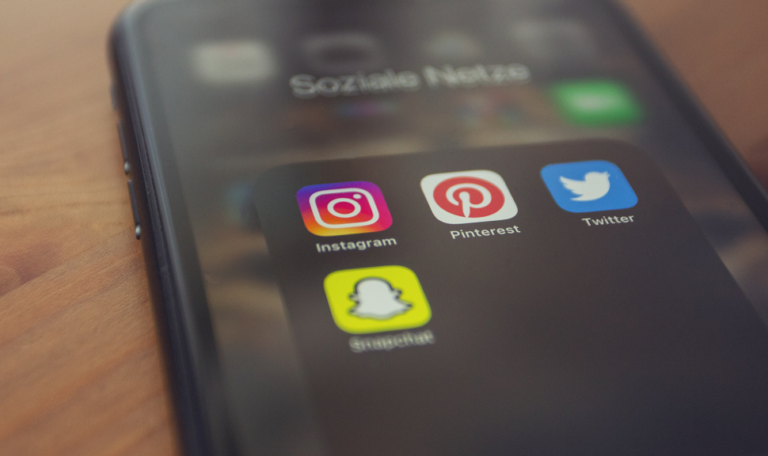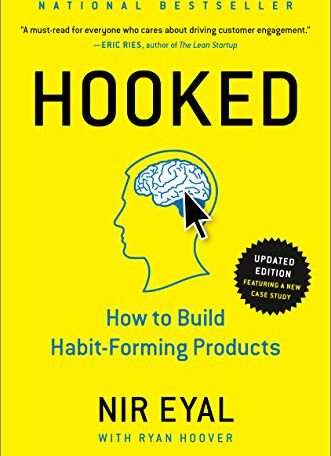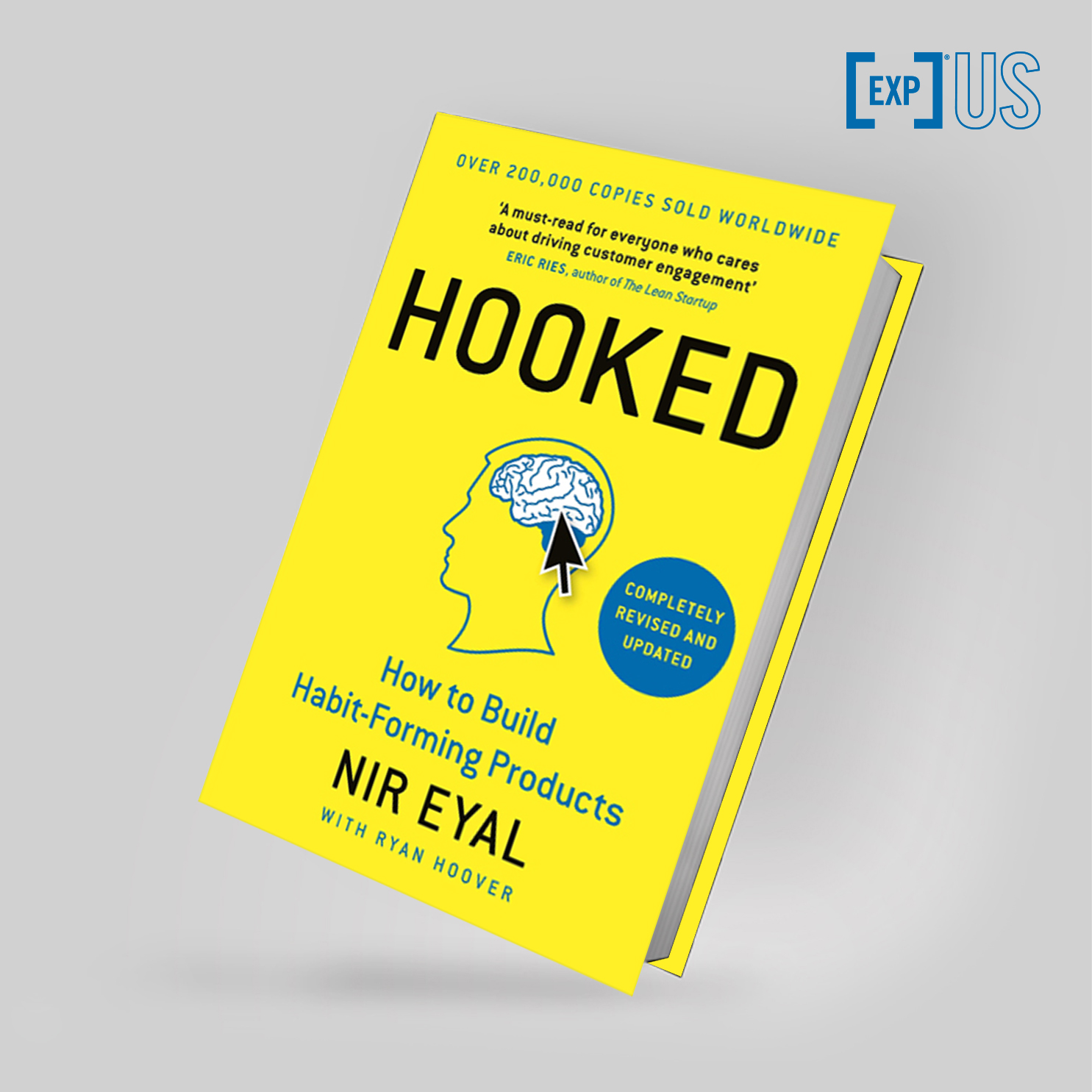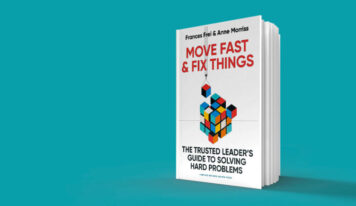How to build habit-forming products
Core Ideas:
1 – Neuroscientists believe that habits give us the ability to focus our attention on other things by storing automatic responses in the basal ganglia, an area of the brain associated with involuntary actions.
2 – Ego rewards are a defining component in video games, as players seek to master the skills necessary to achieve their goals. Moving to another level, unlocking special powers satisfy the player’s desire for competence through progression.
3 – Many companies are convinced that they produce advertising campaigns that users will love. They hope that their videos will go viral. But so-called reality distortion pitches don’t avoid the crucial question, “Would I find this useful?”
4 – Using the Hook Method from this book, the Fitbod app, with a single tap, creates the next workout in the gym, removing the discomfort of uncertainty by quickly telling you which exercises to do, in what order, how many reps to do, etc.
5 – The initial question for the Habit Test is, “What are the users of the product?” The more often the product is used, the greater the chance of the habit. If you are developing a social networking app, such as Slack and Instagram, you should expect habitual users to visit the service several times a day.
About the author:

Nir Eyal spent years in the video game and advertising industries, where he learned and applied the techniques described in Hooked to motivate and influence users. He has taught courses in Applied Consumer Psychology at the Stanford Graduate School of Business.
Introduction
Where could I find schemes for habit formation? To my disappointment, I found no guide. Companies specializing in behavior design were protecting their secrets, and although I discovered old books and blogs related to the topic, there was no instruction manual for creating habit-forming products.
I started documenting my observations of hundreds of companies to find patterns in user experience designs and functionality. While every company had a unique pattern, I tried to identify the commonalities behind the winners and understand what the losers were missing.
In the second half of 2012, Dr. Baba Siv and I designed and taught a class at Stanford Graduate School of Business on the science of influencing human behavior. The following year, I partnered with Dr. Steph Habif to teach a similar course at Hasso Plattner Institute of Design.
These years of dedicated research and real-world experience resulted in the creation of the Hooked Model: a four-step process that businesses use to form habits. The four phases or steps provide the framework for the chapters in this book and are now presented briefly.
Trigger
A trigger is the actuator of behavior – the spark plug in the engine. There are two types of triggers: external and internal. Habit-forming products start by alerting users with external triggers, such as e-mails, website links, or app icons on a cell phone.
When users begin to automatically signal their next behavior, the new habit becomes part of their daily routine. Over time a user associates Facebook with their need for social connection. Chapter 2 explores external and internal triggers, answering the question of how product designers determine which triggers are most effective.
Action
After the trigger comes the action: the behavior done in anticipation of a reward. The simple act of clicking on the interesting photo in your news feed leads a user to a site called Pinterest, a “visual bookmarking tool for storing and discovering creative ideas.”
This hook phase, as described in Chapter 3, draws on the art and science of usability design to reveal how products drive specific user actions. Companies leverage two basic cogs of human behavior to increase the likelihood that an action will occur: the ease of acting and the psychological motivation to do it.
Variable Reward
What distinguishes the Hook Model from a basic, simple feedback cycle is the ability of the hook to create a desire. Feedback cycles are everywhere, but predictable ones do not create desire. The fact that the refrigerator light comes on when you open the door doesn’t cause you to keep opening it repeatedly. But add some variability to the mix – suppose a different treat magically appears in the fridge every time you open it – and, voila, you create something intriguing.
Variable rewards are one of the most powerful tools companies implement to hook users: Chapter 4 explains them in more detail. Research shows that levels of the neurotransmitter dopamine increase when the brain expects a reward.
Investment
The last phase of the Hook Model is where the user does a little work. The investment phase increases the chances that the user will go through the future cycle once again. Investment occurs when the user adds something to the product or service such as time, data, effort, social capital, or money.
However, the investment phase is not about users opening their wallets and going on with their daily lives. Instead, investment implies an action that improves the service for the next round. Inviting friends, declaring preferences, building virtual collections, and learning to use new features are all investments that users make to improve their experiences. This engagement can be leveraged to make the trigger more engaging, the action is easier, and the reward more exciting with each pass through the Hook Model. Chapter 5 investigates how investments encourage users to go through successive hooks.
In this book, I have compiled the most relevant research, shared practical ideas, and provided a workable framework designed to increase the innovative entrepreneur’s chances of success.
Hooks connect a user’s problem to a company’s solution often enough to form a habit. My goal is to provide a deeper understanding of how certain products change what we do and, by extension, who we are.

Chapter 1 – The Habit Zone
Habits are one of the ways the brain learns complex behaviors. Neuroscientists believe that habits give us the ability to focus our attention on other things by storing automatic responses in the basal ganglia, an area of the brain associated with involuntary actions.
Habits form when the brain takes a shortcut and stops actively deliberating about what to do next. The brain quickly learns to encode behaviors that provide a solution to whatever situation it encounters.
For example, nail-biting is a common behavior that occurs with little or no conscious thought. Initially, someone may start biting fingernails for a reason – removing the ugly skin around the nail, for example. But when the behavior occurs without a conscious purpose – simply as an automatic response to a stimulus – the habit takes over.
Promoting consumer habits is an effective way to increase a company’s value by driving customer lifetime value (CVVUC): how much money a customer-generated before they switched to a competitor, stopped using the product, or died. User habits increase how long and how often customers use a product, resulting in higher VVUC.
Some products have a very high VVUC. For example, credit card customers tend to remain loyal for a very long period and deserve a bonus. So credit card companies are willing to invest a lot of money in acquiring new customers. This explains why you receive so many promotional offers, to entice you to add another card or upgrade the current one. Your potential VVUC justifies a credit card company’s marketing investment.
Companies that succeed in building a habit-forming business are often associated with successful breakthrough innovations. But like any discipline, habit design has rules and limitations that define and explain why some products change lives, while others do not.
For one thing, new behaviors have a short half-life, since our minds tend to revert to old ways of thinking and doing. Experiments show that laboratory animals habituated to new behaviors tend to revert to their initial learned behaviors over time. To borrow a term from accounting, behaviors are LIFO (last in, first out) – “last in, first out.” In other words, the habits you have recently acquired are also likely to be the ones that tend to disappear the fastest.
For new behaviors to take hold, they must occur frequently. In a recent study from University College London, researchers followed participants as they tried to form the habit of flossing.
Why haven’t more Google users switched to Bing? Habits keep users loyal. If a user is familiar with the Google interface, switching to Bing requires cognitive effort. While many aspects of Bing are similar to Google, even a small change in pixel placement forces the would-be new user to learn a new way to interact with the site. Adapting to the differences in Bing’s interface is what slows down regular Google users and makes Bing seem inferior, not the technology itself.
A habit is when not acting causes a bit of discomfort. The feeling is similar to an itch, a feeling that manifests itself within the mind until it is satisfied. The habit-forming products we use are simply there to provide some kind of relief. Using technology or product to relieve the itching sensation provides faster satisfaction than ignoring it. Once we come to depend on one tool, switching to something else takes work.
Pain avoidance is a key motivator in all species. When we experience discomfort, we seek to escape the uncomfortable sensation. In the next chapter, we will explore how negative sensations drive users to seek solutions. For now, the important thing to remember is that habit-forming products create associations in users’ minds – and that the solution to their pain can be found in the use of your product.
Chapter 2 – Trigger
Instagram is an example of an entrepreneurial team – knowledgeable in both psychology and technology that triggered a habit-forming product in users who subsequently made it part of their daily routines.
External Triggers. Habit-forming technologies begin to change behavior by first providing users with a call to action. This sensory stimulus is conveyed through some things in our environment. External triggers are built into the information, which tells the user what to do next.
Since this is an important account alert email, Mint has reduced the available actions to a single click: log in to view and correct your account. More choices require the user to evaluate multiple options. Too many choices or irrelevant options can cause hesitation, confusion, or worse – abandonment. Reducing the reasoning required to perform the next action increases the likelihood that the desired behavior will occur with little thought.

Relationship triggers can create the viral hyper-growth that entrepreneurs and investors covet. Sometimes relationship triggers drive growth because people love to tell others about a wonderful offer.
For example, it’s hard to top PayPal’s viral success in the late 1990s. PayPal knew that when account holders started transferring money online to other users, they would realize the enormous value of the service. The fascination that someone just sent you money was a huge incentive to open an account, and PayPal’s growth spread because it became viral and useful.
Internal triggers. They automatically manifest themselves in your mind. Connecting internal triggers to a product is the golden opportunity of habit-forming technology.
A study done at the Missouri University of Science and Technology showed that people suffering from symptoms of depression used the Internet more. Why? One hypothesis is that those with depression experience negative emotions more often than the general population and seek relief by turning to technology to lift their mood.
To ease the feeling of uncertainty, Google is just a click away. Email, perhaps the mother of all habit-forming technology, is an appropriate solution to many of our daily agitations, from validating our importance (or even our existence) and checking if someone needs us, to provide an escape from life’s more mundane moments.
The association between an internal trigger and its product, however, is not formed overnight. It can take weeks or months of frequent use for internal triggers to obtain stimuli. New habits are triggered by external triggers, but associations with internal triggers are what keep users hooked.
Jack Dorsey, co-founder of Twitter and Square, shared how his companies answer these important questions: “[If] you want to create a product that’s relevant to people, you need to put yourself in their shoes and you need to write a story from their point of view. So we spend a lot of time writing what are called user narratives”.
One method is to try to ask the question “Why?” as many times as it takes to arrive at an emotion. Usually, this would happen in the fifth why. This is a technique adapted from the Toyota production system, described by Taiichi Ohno as the “5 Whys Method”. Ohno wrote that “the basis of Toyota’s scientific approach … ‘why’ five times, clarifies the nature of the problem and its solution.”
Chapter 3 – Action
While there are often theories about what drives human behaviors, Dr. B. J. Fogg, director of the Persuasive Technology Lab at Stanford University, has developed a model that serves as an elegant way to understand what drives our actions.
Fogg posits that there are three ingredients necessary to initiate all behavior: (1) the user must have sufficient motivation; (2) the user must have the ability to complete the desired action; and (3) a trigger must be present to activate the behavior.
The nature of motivation is a widely contested topic in psychology, but Fogg argues that three core Motivators drive our desire to act. Fogg states that all human beings are motivated to seek pleasure and avoid pain; seek hope and avoid fear; and finally, seek social acceptance and avoid rejection. We can consider both sides of the three core motivators as levers to increase or decrease the likelihood that someone will perform a specific action by increasing or decreasing that person’s motivation.
In his book, Something New: Three Simple Steps to Creating Truly Innovative Products, author Denis J. Hauptly deconstructs the innovation process down to its fundamental steps. First, says Hauptly, understand why people use a product or service. Next, establish the steps the customer must take to get to that result. Finally, after the series of tasks from intent to outcome is understood, simply start removing the steps until you get to the simplest process.
Consequently, any technology or product that significantly reduces the steps to complete a task will have high adoption rates by the people it assists.

More recently, companies like Pinterest, Instagram, and Snapchat have taken online content creation to a new level of simplicity. The pattern of innovation shows that making a given action easier to perform encourages each successive phase of the web, helping to transform the formerly niche behavior of content publishing into a viral habit.
Chapter 4 – Variable Reward
Variable rewards can be found in all kinds of products and experiences that grab our attention. They fuel our impulse to check email, browse the web, or buy products on sale. I propose that variable rewards are of three types: the tribe, the hunt, and the ego. Habit-forming products use one or more of these types of variable rewards.
Rewards of the tribe. We are a species in which we depend on each other. Tribe rewards, or social rewards, are driven by our connection to other people. Our brains are adapted to seek rewards that make us feel accepted, attractive, important, and included.
Many of our institutions and industries are built around this need for social reinforcement. From civic and religious groups to sports spectators and television talk shows, the need to feel social connection shapes our values and drives much of the way we spend our time.
Facebook provides several examples of varying social rewards. Connecting reveals an endless stream of friends sharing content, comments from others, and records of how many people have “liked” something. The uncertainty of what users will find each time they visit the site creates the intrigue needed to attract them again.
Reward hunting. Slot machines provide a classic example of the variable rewards of hunting. Gamblers spend $1 billion a day on slot machines in American casinos, which is a testament to the power of machines to compel players. By handing out money at random intervals, games of chance entice players with the prospect of hitting the big time. Naturally, winning is totally out of the player’s control – but the quest can be intoxicating.
Ego Rewards. These rewards are a defining component in video games, as players seek to master the skills necessary to achieve their goals. Moving to another level, unlocking special powers, and other game mechanics satisfy the player’s desire for competence by showing progression and completion.
To feel rewarded, the user must have a sense of accomplishment. What happens when inboxes are flooded with too many messages? Users may give up when they feel that the effort to keep inboxes under control is hopeless. To combat the problem and give users a sense of progress, Google created the “Master Box.” Using this feature, Gmail skillfully segments emails into sorted folders to increase the frequency with which users reach a “zero inbox” – an almost mystical state with no unread emails. Of course, some of the sortings of folders are done through prestidigitation by hiding some low-priority emails. But by giving users the feeling that they are processing the inbox more efficiently, Gmail provides a sense of accomplishment and control.
Chapter 5 – Investment
In a 2011 study, Dan Ariely, Michael Norton, and Daniel Mochon measured the effect of work on how people value things. Those who invested work associated greater value with their paper creations [origami] simply because they worked on them. Ariely calls this the IKEA effect.
IKEA, the world’s largest furniture retailer, sells affordable, ready-to-assemble home furnishings. The Swedish company’s main innovation is its packaging process, which allows the company to reduce labor costs, increase distribution efficiency, and make better use of physical space in stores.
Unlike its competitors who sell pre-assembled goods, IKEA puts customers to work. It turns out that there is a hidden benefit to making users invest physical effort in assembling the product – by asking customers to assemble their furniture. Ariely believes that they adopt an irrational passion for the furniture they have built, just as the students did in the origami experiment. Companies that benefit from user effort add greater value to their products simply because their users add work to them. The users have invested in the products through their work.

For the user seeking followers, the more followers there are, the more valuable the service becomes. Content creators on Twitter seek to reach the largest possible audience. The only way to legitimately acquire new followers is to send out tweets that others find interesting enough to justify following the sender. Therefore, to acquire more followers, content creators must invest in producing more – and better – tweets. The cycle increases the value of the service for both sides the more the service is used. For many users, switching services means abandoning years of investment and starting over. No one wants to rebuild a loyal audience that they have worked hard to acquire and nurture.
Chapter 6 – What will you do with it?
The Hook Model is fundamentally about changing people’s behavior, but the power of developing persuasive products should be used with caution.
Creating habits can be a force for good, but it can also be used for nefarious ends. What responsibility do product creators have when creating user habits?
Users take their technologies with them to bed. When they wake up, they check notifications, tweets, and updates, sometimes even before saying “Good morning” to their loved ones. Ian Bogost, the famous professor and game developer, calls the wave of habit-forming technologies the “cigarette of this century” and warns of their equally addictive and potentially destructive side effects.
However, manipulation does not always have a negative connotation. If manipulation is an experience created to change behavior, then Weight Watchers, one of the most successful mass manipulation products in history, fits the definition. The decisions of Weight Watchers’ customers are programmed by the system’s designer, but few question the morality of the business.
I offer the Manipulation Matrix, a simple decision support tool that entrepreneurs, employees, and investors can use long before the product is shipped or the code is written. The Manipulation Matrix does not attempt to answer which companies are moral or which will succeed, nor does it describe which technology can or cannot become habit-forming. The matrix is not meant to help you answer “Can I hook my users?” but instead, “Should I try?”
To use the Manipulation Matrix, the developer needs to ask two questions. First, “Would I use the product myself?” and second, “Will the product help users substantially improve their lives?” The matrix features four categories: Facilitator, Merchant, Animator, and Dealer.
Facilitator. When building a habit for a user other than yourself, you can only consider yourself a facilitator if you have personally experienced the problem. Jake Harriman of the U.S. Marine Corps, who fought in Iraq, says his encounter with extreme poverty overseas changed his life. After seven and a half years of active duty, Harriman realized that weapons alone could not stop terrorists intent on harming Americans. “Desperate people commit desperate acts,” Harriman says. After his military service, Harriman founded Nuru International, a social enterprise, which targets extreme poverty by changing the habits of people living in rural areas (Kenya, for example), and by living personally among these populations.
Merchant. Numerous companies are convinced that they produce advertising campaigns that users will love. They hope that their videos will go viral and that their branded apps will be used daily. The so-called reality distortion fields prevent them from asking the crucial question, “Would I find this useful?” The answer to that nagging question is almost always no, so they distort their thinking until they can imagine a user they believe will find the ad valuable.
Marketers tend to lack the empathy and knowledge to create something that users want.
Entertainer. Entertainment is an art and is important in its own right. Art provides joy, helps us see the world differently, and connects us to the human condition. These are all important and ancient pursuits. Entertainment, however, has specific attributes that the entrepreneur, employee, and investor should be aware of when using the Manipulation Matrix.
In this quadrant, the sustainable business is not purely the game, music, or book – profit comes from an effective distribution system to get these products to market while they are still attractive, and at the same time keep the stream full of exciting releases to feed an eager audience.
Dealer. Creating a product that the designer does not believe will improve the lives of users and that he would not use is called exploitation. In the absence of these two criteria, presumably, the only reason the designer hooks users are to make money. Certainly, you can make money by getting users to do things that serve no purpose other than to extract money; and where there is money, there will be someone willing to take it.
The question is: Is this someone you? Casinos and drug dealers offer users an ideal time, but when the action harms the user, the fun is over.
Chapter 7 – Case Studies
Bible app
In July 2013, YouVersion, founded by Bobby Gruenewald, announced a monumental milestone for the app, putting it on a rare technology plateau. With the unassuming name Bible App, the app has been downloaded by over 100 million devices and is growing. Gruenewald says that a new installation occurs every 1.3 seconds.
How did YouVersion come to dominate the digital “word of God”? It turns out that there is much more behind the app’s success than simple missionary fervor. It’s a case study of how technology can change behavior by uniting the principles of consumer psychology with the latest big data analytics.
The first version of YouVersion was not for mobile. “Originally we started as a PC website, but that didn’t engage people with the Bible,” Gruenewald explains. “Only after we tried a mobile version did we notice a difference in people, including ourselves, turning to the Bible more because it was on a device that people always had with them.”
For those who have not yet formed a routine around Bible study, the reading plans provide structure and guidance. “Some selections from the Bible can be difficult for people to assimilate,” admits Gruenewald. “By offering reading plans with small different sections of the Bible each day, they help keep readers from giving up.”
By turning the readings into digestible wafer-sized fragments, the app draws the reader’s attention to the small task at hand while avoiding the intimidation of reading the entire book.
Chapter 8 – Habit Testing and Where to Look for Habit Forming Opportunities

How can you implement the concepts in this book to measure the effectiveness of your product to develop user habits? Through my studies and discussions with entrepreneurs from today’s most successful habit-forming companies, I have distilled this process into what I call the Habit Test. It is a process inspired by the “build, measure, learn” methodology advocated by the Lean Startup movement.
The Habit Test encompasses several steps or phases:
Step 1: Identify
The initial question for the Habit Test is “Who are the users of the product?” Remember, the more often the product is used, the more likely it is to form a habit in the user. First, define what a dedicated user means. How often should someone use the product?
The answer to this question is very important and can change your perspective extensively. Publicly available data from similar products and solutions can help define your users and engagement goals. If no data is available, you should make intelligent assumptions – but be realistic and honest. If you are developing a social networking app like Slack and Instagram, you should expect regular users to visit the service several times a day.
Step 2: Codify
Let’s say you’ve identified a few users who meet the criteria of regular users. However, how many of those users are enough? My rule of thumb is 5%. Although your active user rate needs to be much higher to maintain business, this is a good benchmark.
However, if at least 5% of your users do not find the product valuable enough to use as much as you had hoped, you may have a problem. Either you have identified the wrong users, or the product needs to go back to the drawing board. If you have, however, exceeded that percentage and identified your regular users, the next step is to code the steps they followed when using the product to understand what hooked them.
Step 3: Modify
Armed with new information, it’s time to revisit the product and identify ways to persuade new users to follow the same habit path adopted by the enthusiasts. This might include an update to the registration channel, content changes, removing features, or more emphasis on an existing feature. Twitter used the information gained in the previous phase to modify the ambiance process, encouraging new users to immediately start following others.
Interface changes. There is a long history of technology companies that have made fortunes by uncovering behavioral secrets revealed by a change in interface. Apple and Microsoft managed to transform inelegant terminals into graphical user interfaces (GUI) accessible by mainstream consumers. Google has simplified its search interface compared to ad-filled, hard-to-use competitors like Yahoo! and Lycos. Facebook and Twitter have turned new behavioral insights into interfaces that have simplified online interactions. In each case, a new interface made action easier and revealed surprising truths about user behaviors.
Review: Rogério H. Jönck
Photos: Unsplash

FACT SHEET:
Title: Hooked – How to build habit-forming products and services
Original Title: Hooked
Author: Nir Eyal
![[Experience Club] US [Experience Club] US](https://experienceclubus.com/wp-content/uploads/2021/03/laksdh.png)










![[Experience Club] US [Experience Club] US](https://experienceclubus.com/wp-content/uploads/2021/03/logos_EXP_US-3.png)






![[EXP no SXSW 2024] Rohit Bhargava: como o pensamento não-óbvio pode melhorar o mundo](https://experienceclubus.com/wp-content/uploads/2024/03/rohit-356x206.jpg)
